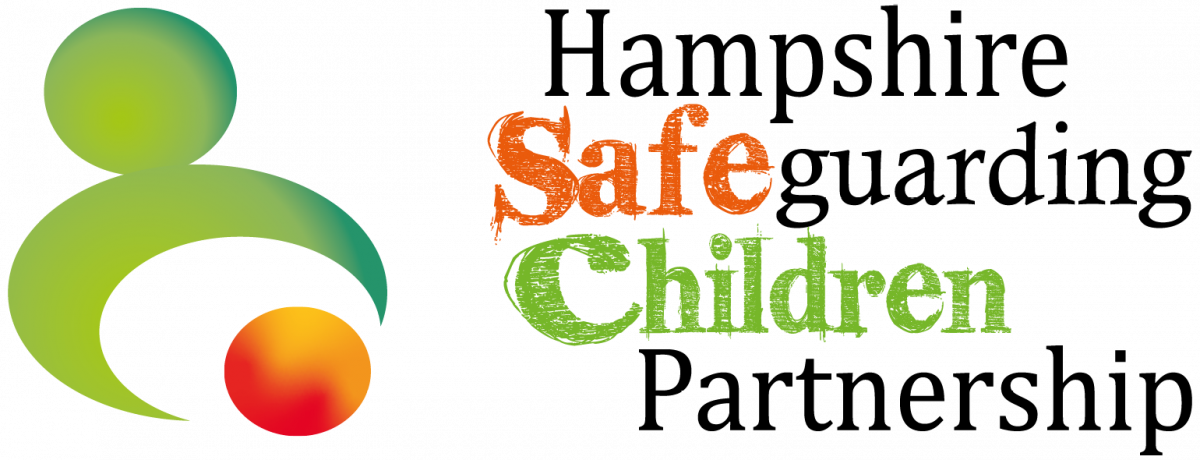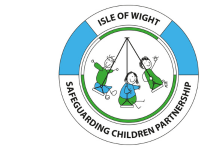Identifying and responding to risk, critical thinking and bias
“Working with risk and uncertainty is the DNA of safeguarding practice” national Child Safeguarding Practice Review Panel Annual Report 2022-23
Responding to the complexity of child abuse and neglect requires our collective curiosity, critical thinking and analysis. These skills help us to build an accurate picture of the child’s lived experience, what is happening in their life and the abuse or harm they may be experiencing or are at risk of experiencing .
We need to be curious and challenge our own and other assumptions, considering what is unknown as well as what is known. Enabling us to be able to acknowledge and work with uncertainty.
“I’m not a checklist, everyone’s an individual in their own right. We’ve found a lot, especially with professionals that everyone’s risk assessed as if they are the same…… Sometimes they have a plan in their head and then don’t want to change it based on their assumptions at the beginning” Parent/Carer as quoted in Multi Agency Practice Principles for Responding to Child Exploitation and Extra Familial Harm
If you do one thing: Remember curiosity and challenge always starts with a conversation, working together is talking, listening and respecting others views.
- Be curious about what children and families tell you, thinking about impact on the child and what needs to happen next for the children and families you work with.
- Revisit the thresholds chart and use it to support your thinking and analysis, particularly when making a referral to Children’s Social Care
- Do the basics well, use the tools available to you to support risk assessment, critical thinking and analysis. These include, but are not limited to:
- Day in the life tools (child’s lived experience)
- Neglect Threshold and Indicator Chart (to understand and respond to concerns regarding neglect)
- Child Exploitation Risk Assessment Framework (CERAF) or for certain health colleagues the CERQ4 (for assessing risks of child exploitation and extra familial harm.
- Unborn Baby Protocol Interactive Risk Assessment Pathway (Assessing and responding to safeguarding risks for unborn/newborn babies
- There may be risk assessment tools available to you within your agency supporting your practice, make sure you know what they are and when and how to use them.
- 4) Make sure you share and receive information effectively to understand the holistic needs of and risks to a child and can identify any discrepancies.
- 5. Information exchange, make sure you share and receive information effectively to understand the holistic needs of and risks to a child and can identify any discrepancies.
- 6. Information exchange, make sure you share and receive information effectively to understand the holistic needs of and risks to a child and can identify any discrepancies.
- 7. Recognise the importance of safeguarding supervision and use the opportunities open to you. Talk to your line manager if you are unsure how to access safeguarding supervision.
- 8. Understand the importance of taking a whole family approach to risk assessment and support (National Child Safeguarding Practice Review Panel Yearly Report 2022/23). This means:
- Don’t just focus on one specific family member (often the mother) or a single child where there are siblings (including adult siblings) or other children in the household.
- Make sure any vulnerabilities of other family members are recognised and considered and responded to. See the Family Approach toolkit
- Always consider the possible or actual impact on the child of parent oriented issues such as mental ill health. Seek advice as needed.
- Recognise and respond to the vulnerability of babies (including unborn babies), recognising the contextual factors that may increase vulnerability such as parental/carer substance use or trauma. Make sure you know connected adults and visit the HSCP Unidentified Adults toolkit.
9. Keep a focus on risks outside the family. This means:
- Don’t focus on the child’s behaviour that challenges but consider if this might be a sign of child exploitation. “Don’t ask why you behave that way?” take a trauma informed approach and “ask what has happened to you?” An over focus on the behaviour may lead to a narrow focus in assessment and support and a lack of professional curiosity.
- Recognise that some children and families experience a range of vulnerabilities that can increase risk to a child.
- For more information visit the HIPS Child Exploitation toolkit.
Essentials: Critical thinking
Critical thinking skills are central to effective safeguarding practice, it means practitioners should:
- Keep an open mind
- Be able and prepared to accept information that does not fit with previous views or assessments. This means “holding our conclusions softly” Kahneman 2011
- Be objective about presented evidence and consider key research and knowledge
- Consider the meaning of self-reported or third party information and how this may impact the child’s lived experience. Third party information includes that shared by family, friends and neighbours and needs to be considered and triangulated to develop a holistic understanding of a child’s needs.
- Be proactive in gathering what information is held by other professionals working with a family, ensure this is recorded accurately and understood in the context of all information.
- The Discrepancy Matrix (Wonacott and Morrison) is a helpful tool that can be used to structure your thinking. At it’s simplest it helps us understand – what is known (has evidence) or is missing, what is ambiguous or assumption. This helps define what to do next. The tool can be used by the practitioner themselves but is very effective as a tool to use as part of supervision (including peer or team supervision).
- Make sure you think child, think family and think child again. Always think about the impact of adult issues on children, particularly where there are concerns about mental health, substance use or domestic abuse. The needs of children are intrinsically linked to the needs of the adults in their lives.
- Make time for reflection, gathering information is not enough, we need time to reflect and think what this means for the child and family. This could be a form of supervision or individual reflection. It is important to have an awareness of and mitigate perception bias and remember we can wrong. As we may need to develop further understanding of the situation for the child so that decision making is safe and effective.
- Maintain an approach of respectful uncertainty, seek to triangulate information provided and don’t over rely on self-reported information by parents and carers, where there are concerns about a child. Always remain curious and focused on the child’s voice when assessing risk.
“Ultimately the safety of a child depends on staff having the time, knowledge and skill to understand the child and their family circumstances” Lord Laming 2009.
Analysis is “the ability to analyse critically the evidence about a child and family’s circumstances and to make well-evidenced decisions and recommendations.” Professor Eileen Munro 2011
Professor Munro went on to say we need “skills in achieving some objectivity about what is happening in a child’s life and within their family and assessing change over time.”
Child safeguarding practice reviews demonstrate learning in this area and a need to strengthen our practice. Why is this important? Effective analysis:
- Gives a better understanding of risk which equals better outcomes for children.
- Provides analytical recording rather than being solely descriptive – what does this mean for the child?
- Means we analyse from the child’s perspective, to help inform next steps.
- Draws together all the information regarding a child and family to identify the level and nature of the child’s needs and if any, the level of risk.
- Offers the opportunity to balance both the identified risks and protective factors to make informed decisions about any further intervention and support.
We always need to consider the level of risk and protective factors in a family from the child’s perspective – their lived experience and voice.
Analysis involves:
Examining the elements of an issue getting a better understanding of it and then selecting a course of action (Wilkins and Boahen, 2013).This is often described as breaking down information, weighing up information and making sense of information
Analysis can be written down or verbal – it is an ongoing process.
Enables exploration of relationships and how they work
Being centred on the impact on the child – what does this mean for the child?
Analysis should include:
The identification of any specific concerns and be specific to the family you are working with
How background or contextual factors may have led to the child’s current situation and any associated risks

The child’s voice is always central
This is about what the child says, what they do and how they present both physically and emotionally. How they engage with you and others around them particularly their parent/caregivers. What is their home environment like? Their experience of education (if of school age) or their early years setting?
Analysis is like your “workings out” it should be evidence/research based and show how you got to the plan or decision.
There are a number of tools to support analysis available to you
Rolfe’s Reflective Model

Framework for the Assessment of Children in Need and Their Families
(DOH 2000)
This framework provides a systematic way of analysing, understanding and recording what is happening to children and young people within their families and the wider context of the community in which they live. From such an understanding of what are inevitably complex issues and inter-relationships, clear professional judgements can be made. These judgements include what actions must be taken and which services would best meet the needs of this particular child and family. The evidence based knowledge which has informed the development of the framework has been drawn from a wide range of research studies and theories across a number of disciplines and from the accumulated experience of policy and practice.

HSCP Toolkits such as:
Bias is a well-researched and evidenced area, and we need to be ever mindful in safeguarding practice of conscious and unconscious bias in our work. This is why critical thinking, analysis and supervision and support are so important. It also highlights the importance of professional challenge; as we may be aware of some of our biases but not all. All the biases below reflect areas of learning within child safeguarding practice reviews.
Optimism bias is where we see the best in people or expect a positive outcome even in the light of evidence that suggests differently.
Confirmation bias is where beliefs and views can be held on to even in the light of evidence that challenges.
Belief bias is where we form beliefs about someone or a family very quickly and subsequent information is understood in the light of those beliefs, with little evidence. Racial, cultural and gender biases are examples of belief biases
Cognitive biases can be varied and include adultification bias – seeing children as less in need of protection, due to their age, ethnicity, size, presentation. This can often be seen in the language we use about children, to describe their behaviour and presentation.
You can find out more about disproportionality within this toolkit.
For more information please see
NSPCC briefing Safeguarding Children who come from Black, Asian and minoritised ethnic communities
Child_Exploitation_Appropriate_Language_Guide_2022.pdf (childrenssociety.org.uk)
Training
You can access the HSCP learning from reviews training sessions here.
You can access the IOWSCP training here.

